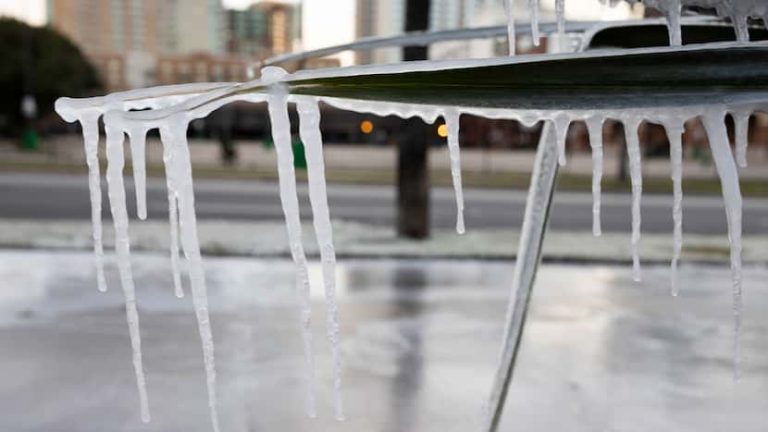AUSTIN — ERCOT predicts widespread power outages are possible if Texas experiences severe winter weather on par with storms last year that brought subfreezing temperatures for days.
The Electric Reliability Council of Texas had already sounded the alarm about winter, urging power plant operators to restart shuttered natural gas and coal plants to bolster energy reserves, but it halted the program after receiving so few applications.
As we approach the winter solstice, here are five things you need to know about the risks of power outages.
What are the chances of planned power outages?
When demand for electricity in Texas exceeds supply, ERCOT is forced to cut off power to some customers to maintain grid stability.
The last time this happened was in February 2021, when a massive winter storm caused equipment failures at power plants of all kinds and paralyzed parts of fossil fuel infrastructure. As the power grid came close to collapse, ERCOT ordered controlled blackouts, leaving millions without electricity. More than 200 people died.
The seasonal assessment predicts that ERCOT has a 14.4% chance of ordering controlled blackouts, also known as rolling blackouts, if Texas experiences a winter storm similar to the severe freeze that occurred Dec. 22-25 last year. By January 2024, that likelihood increases to about 16.8%, the grid operator projects.
The relatively high probability of outages only occurs in scenarios modeled by ERCOT for an extreme winter storm; the actual probability of outages is much lower, according to ERCOT.
When is the riskiest?
8 a.m. is when ERCOT predicts power outages are most likely.
Winter mornings are the worst because they’re when people are waking up and using more electricity. Temperatures are near the lowest of the day, so heaters are likely running while people boil water or cook.
Add to this the usual slowdown in renewable energy production during the winter months, and you have a morning surge in electricity demand that doesn’t match up with increased energy production.
“The resource mix that’s changing on the grid isn’t very conducive to meeting increased peak demand in the winter,” ERCOT CEO Pablo Vegas said in a recent interview. “And that’s why we have an elevated risk profile that we have to deal with.”
What creates the risk?
The growing population and number of businesses are the primary causes of energy shortages on the ERCOT grid.
Census estimates that Texas’ population will exceed 30 million in 2022. The state’s population has grown 20% since 2010.
That’s showing up in energy usage: Demand for electricity has broken all-time records 10 times this summer, with monthly demand records also being broken regularly, according to ERCOT data.
The amount of electricity used continues to grow faster than population growth, but so too is the amount of new generation being added to the grid, primarily from renewable sources.
The state has seen a massive increase in wind and solar power, which at times account for the majority of electricity generated on the grid, and while the electricity they generate is cheap and clean, it is entirely dependent on the weather.
The risk stems from a shortage of new dispatchable power plants, typically fueled by natural gas, that can generate electricity on demand. Most of Texas’ natural gas-fired power plants were built more than 30 years ago, and few new plants are planned.
If these older plants cannot stay operational, electricity reserves could reach critical levels.
What is being done about it?
Vegas, the ERCOT CEO, said the grid operator is doing widespread weatherization of its facilities.
After the deadly freeze in February 2021, Congress put in place weatherization standards for power plants. ERCOT conducted extensive inspections of power plants to ensure those rules were being followed.
The grid operator also created incentive programs to pay power plants to keep reserve fuel on-site.
Additionally, the Texas Railroad Commission, which regulates the state’s oil and gas industry, has established several weatherization standards for gas wells and pipelines, and both ERCOT and the Railroad Commission have developed maps of critical infrastructure.
Agencies involved in winter emergency response say communication between them has improved since the creation of the Texas Energy Reliability Council, which includes energy companies, the Texas Department of Transportation, the Texas Emergency Management Agency, ERCOT, the Public Utilities Commission and the Railroad Commission.
What about El Niño?
The National Weather Service predicts that an El Niño weather event is likely this winter.
The warmer-than-normal Pacific current that drives the El Niño weather phenomenon could reach “historic” levels, according to the weather service, meaning cooler temperatures and more rainfall in general for Texas and the rest of the world.
This means ERCOT isn’t the only one that could experience energy shortages this winter.
A recent report from the North American Electric Reliability Corporation, which regulates the U.S. and Canadian power grids, found that Texas, the Midwest, parts of New England and Quebec are at increased risk of energy shortages.

